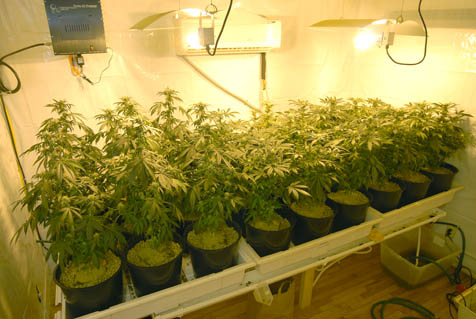Pot War Flares Up
Council Persuaded to Allow Some Cultivation

Medical marijuana has been the political equivalent of the sleeping dog the past few years, but the Santa Barbara City Council woke it up just long enough to put it back to sleep by passing an admittedly rushed ordinance banning any cultivation within city limits for anything but personal use. Those with medical-marijuana cards will be allowed to grow as many pot plants as they can in no more than 100 square feet of land, but only in their domiciles. No commercial cultivation will be allowed.
City Hall insiders acknowledge the new ordinance will have zero practical effect on medical-pot cultivation, but at least on paper the measure will be theoretically more restrictive than what’s allowed under the state law enacted by initiative in 1996. That allowed for cultivation of up to 500 square feet for personal use.
Driving the council’s hasty legislative flurry are three state laws just passed to further regulate the sale, manufacture, cultivation, and distribution of medical marijuana. Under these California laws, if City Hall doesn’t have its own regulations on the books by next March, then the state rules would govern all pot cultivation taking place in Santa Barbara. For the council to meet that March deadline, it would have to enact a new ordinance no later than January 19.
Three councilmembers — led by Randy Rowse — argued that City Hall should enact an outright ban on all pot cultivation and then later, with the luxury of more time to deliberate, craft a more precise regulation. Four councilmembers — led by Cathy Murillo — argued for a personal-use exception. Murillo wanted to go further, allowing cultivation on commercially zoned land, but she got no support.
To pass any new zoning ordinance, a five-vote supermajority is required and somebody had to give. Ultimately, it would be Councilmember Dale Francisco — an ardent critic of the medical-marijuana industry — and with him, he brought along Rowse and Councilmember Frank Hotchkiss, making the vote for an interim ordinance unanimous. The council will have to do the same thing regarding the regulation of medical-pot delivery services, of which there are a multitude now operating on the South Coast, but the deadline for such action is two years away.
In the meantime, City Hall still has an ordinance allowing three storefront medical-pot dispensaries in town. One has already been approved and permitted by State and Ontare roads, but construction has yet to begin. Two have been proposed for Milpas Street, and this week, city hearing officers will decide the fate of a new dispensary proposed for 2609 De la Vina Street. That proposal has elicited some opposition from residents near Oak Park. City planners are making no recommendation for or against, which is unusual.
Before City Hall passed its medical marijuana ordinance, as many as 21 dispensaries were operating. Today, none are, but 20 delivery services have sprung up. Councilmember Gregg Hart suggested one of the six state initiatives now in draft form that would legalize recreational marijuana use is likely to pass, which would render the council’s post-haste legislative action moot.



